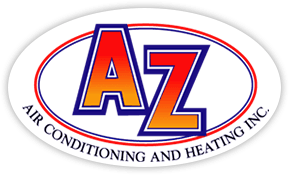
A furnace is usually a background player for your home, keeping you warm across the cold winter months. It often won't be noticed until a malfunction appears.
One cause might be that your furnace has a cracked heat exchanger. It can be a safety risk, so it’s critical to learn the evidence of a cracked heat exchanger and what to do if you believe that is the problem.
What Is a Heat Exchanger in a Furnace?
A heat exchanger helps transition heat from the combustion chamber inside your furnace to the air that flows inside the air ducts. It typically does this via coils or tubes that heat the air while acting as a barrier to keep the gasses created in the combustion chamber, called flue gasses, from escaping out into your home.
Is a Cracked Heat Exchanger Dangerous?
Because of its key role, it’s no surprise that a cracked heat exchanger can pose a risk. Cracks in the heat exchanger can allow dangerous gasses – like carbon monoxide, which can be lethal – to be distributed through your home.
For that reason, don't ever run your furnace if you think you're dealing with a cracked heat exchanger, as letting it run could make the entire family ill. Reach out to an HVAC professional right away if you are worried your heater has a cracked heat exchanger that needs to be repaired.
Four Warning Signs of a Cracked Heat Exchanger:
- Furnace turns off: Cracks in the heat exchanger could cause your furnace to turn off.
- Unusual Smells: If the air coming out of your furnace has a strong chemical scent, it could be an indicator that gasses are seeping through cracks in your heat exchanger. These gasses, which can smell like formaldehyde, are a significant warning sign.
- Carbon monoxide alarm goes off or you notice health problems: If a cracked heat exchanger is relieving carbon monoxide in your home, your carbon monoxide alarm could go off or family members may experience signs of carbon monoxide poisoning. Symptoms include headaches, dizziness, weakness, nausea, vomiting or feeling tired. If the alarm goes off or you feel unusually tired, exit the home right away and then call for help.
- Soot: If you see black sooty collecting near the exterior of your furnace, it’s an indication something could be seriously wrong.
What You Can Do if the Furnace Heat Exchanger is Cracked
If you worry your furnace has a cracked heat exchanger, contact a pro with extensive experience in furnace installation Los Angeles right away so they can take a look at your system and, if needed, start a furnace heat exchanger replacement. Costs should fluctuate depending on the situation, but estimates run in the neighborhood of $1,000 to $3,000.
Estimates aside, the good news is that heat exchangers are generally covered by the warranty. You’ll want to check the warranty paperwork on your furnace, because while the warranty might not cover the entire cost of repairs, it still may significantly reduce your bill.
How to Prevent a Cracked Heat Exchanger in Your Home
One of the best ways to prevent a problem in your furnace overall is via consistent furnace maintenance. Furnaces provide the best possible return on investment when they operate efficiently. Contacting a trained professional to examine your furnace for old parts, clogs in the air filters and other potential problems can help you avoid getting a big bill later on.
It’s also helpful to inspect your furnace filters every few months – it’s encouraged some filters be replaced every 90 days or sooner if they are dirty or grimy. While the filters aren't connected to the heat exchanger itself, the strain of dragging air through a clogged filter makes the entire furnace work more vigorously to do its job. And the harder your furnace needs to run, the more strain components like the heat exchanger will endure.
